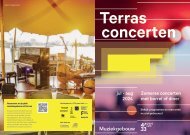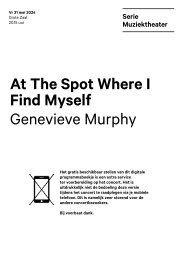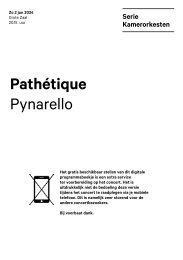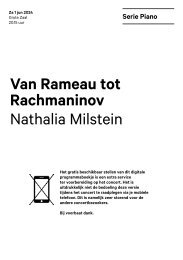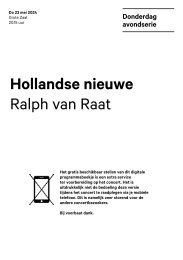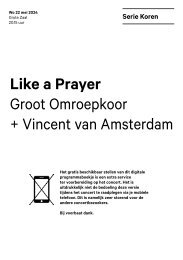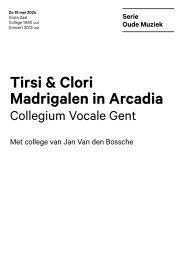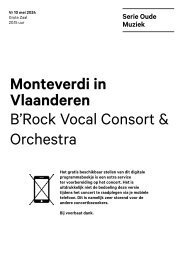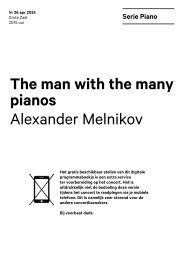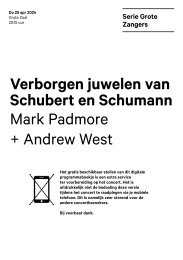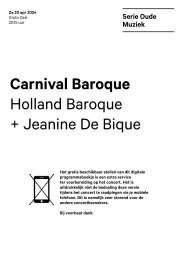Create successful ePaper yourself
Turn your PDF publications into a flip-book with our unique Google optimized e-Paper software.
Programme notes<br />
music, is himself the most fascinating<br />
embodiment of ‘being in between’. His<br />
intricate roots and family story made him<br />
essentially an eternal outsider. Jewish<br />
and German born, he spent most of his<br />
life in the USSR, returning to Germany<br />
only at the end of his life - a return that<br />
obviously couldn’t fully mean a return to<br />
a motherland. Classically inclined in his<br />
stylistic preferences, he was nevertheless<br />
strongly influenced by Shostakovich - and<br />
eventually, after experimenting with both<br />
dodecaphony and popular styles of music,<br />
proceeded to develop his evocative and<br />
complex polystylistic aesthetic that became<br />
his trademark - only to withdraw from it in<br />
his last years. In 1985, shortly before starting<br />
his work with John Neumeier on their new<br />
ballet Peer Gynt, he suffered a stroke, the<br />
first in a series, that left him in a coma. He<br />
experienced clinical death (which later<br />
happened two more times), but recovered.<br />
Undoubtedly, this event profoundly changed<br />
him, but the ballet Peer Gynt had also<br />
become a threshold realm for him, a point<br />
of no return. In 1988 he confessed that<br />
‘things [were] different: [I] no longer see<br />
this crystalline structure, only incessantly<br />
shifting, unstable forms. – Our world seems…<br />
to be a world of illusions, unlimited and<br />
unending. There is a realm of shadows in it.’<br />
Dimension, the ‘outside reality’, the ‘soundspace’<br />
where Peer Gynt is reunited with<br />
Solveig. Perhaps never in the history of art<br />
has ‘the otherworldly’ been presented so<br />
convincingly and vividly. The composer said<br />
in an interview, ‘I feel the fourth dimension<br />
utopically. And the Epilogue is an attempt<br />
to express the shadows of the fourth<br />
dimensions that are given to us by this life.<br />
It is not surrealism, but a realism that is of a<br />
different kind than earthly: it is a beginning<br />
of a new spiral turn.’<br />
The Epilogue from the ballet was arranged<br />
for a chamber ensemble by the composer<br />
himself, following a request by Mstislav<br />
Rostropovich. It is the last part of the ballet<br />
that was added to Ibsen’s story by Neumeier<br />
and Schnittke. It takes it to the Fourth<br />
35





